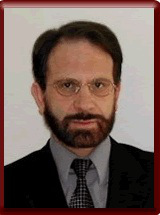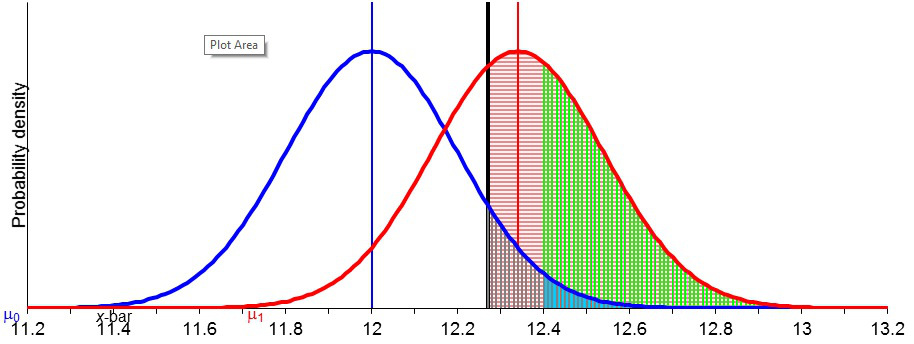 Today
is R.A. Fisher’s birthday and I’m reblogging the post by Aris Spanos
which, as it happens, received the highest number of views of
2013.
Today
is R.A. Fisher’s birthday and I’m reblogging the post by Aris Spanos
which, as it happens, received the highest number of views of
2013.
by Aris Spanos
Few statisticians will dispute that R. A. Fisher (February 17, 1890 – July 29, 1962) is the father of modern statistics; see Savage (1976), Rao (1992). Inspired by William Gosset’s (1908) paper on the Student’s t finite sampling distribution, he recast statistics into the modern model-based induction in a series of papers in the early 1920s. He put forward a theory of optimal estimation based on the method of maximum likelihood that has changed only marginally over the last century. His significance testing, spearheaded by the p-value, provided the basis for the Neyman-Pearson theory of optimal testing in the early 1930s. According to Hald (1998)
“Fisher was a genius who almost single-handedly created the foundations for modern statistical science, without detailed study of his predecessors. When young he was ignorant not only of the Continental contributions but even of contemporary publications in English.” (p. 738)
What is not so well known is that Fisher was the ultimate outsider when he brought about this change of paradigms in statistical science. As an undergraduate, he studied mathematics at Cambridge, and then did graduate work in statistical mechanics and quantum theory. His meager knowledge of statistics came from his study of astronomy; see Box (1978). That, however did not stop him from publishing his first paper in statistics in 1912 (still an undergraduate) on “curve fitting”, questioning Karl Pearson’s method of moments and proposing a new method that was eventually to become the likelihood method in his 1921 paper.
After graduating from Cambridge he drifted into a series of jobs, including subsistence farming and teaching high school mathematics and physics, until his temporary appointment as a statistician at Rothamsted Experimental Station in 1919. During the period 1912-1919 his interest in statistics was driven by his passion for eugenics and a realization that his mathematical knowledge of n-dimensional geometry can be put to good use in deriving finite sample distributions for estimators and tests in the spirit of Gosset’s (1908) paper. Encouraged by his early correspondence with Gosset, he derived the finite sampling distribution of the sample correlation coefficient which he published in 1915 in Biometrika; the only statistics journal at the time, edited by Karl Pearson. To put this result in a proper context, Pearson was working on this problem for two decades and published more than a dozen papers with several assistants on approximating the first two moments of the sample correlation coefficient; Fisher derived the relevant distribution, not just the first two moments.
Due to its importance, the 1915 paper provided Fisher’s first skirmish with the ‘statistical establishment’. Karl Pearson would not accept being overrun by a ‘newcomer’ lightly. So, he prepared a critical paper with four of his assistants that became known as “the cooperative study”, questioning Fisher’s result as stemming from a misuse of Bayes theorem. He proceeded to publish it in Biometrika in 1917 without bothering to let Fisher know before publication. Fisher was furious at K.Pearson’s move and prepared his answer in a highly polemical style which Pearson promptly refused to publish in his journal. Eventually Fisher was able to publish his answer after tempering the style in Metron, a brand new statistics journal. As a result of this skirmish, Fisher pledged never to send another paper to Biometrika, and declared a war against K.Pearson’s perspective on statistics. Fisher, not only questioned his method of moments as giving rise to inefficient estimators, but also his derivation of the degrees of freedom of his chi-square test. Several, highly critical published papers ensued.[i]
Between 1922 and 1930 Fisher did most of his influential work in recasting statistics, including publishing a highly successful textbook in 1925, but the ‘statistical establishment’ kept him ‘in his place’; a statistician at an experimental station. All his attempts to find an academic position, including a position in Social Biology at the London School of Economics (LSE), were unsuccessful (see Box, 1978, p. 202). Being turned down for the LSE position was not unrelated to the fact that the professor of statistics at the LSE was Arthur Bowley (1869-1957); second only to Pearson in statistical high priesthood.[ii]
Coming of age as a statistician during the 1920s in England, was being awarded the Guy medal in gold, silver or bronze, or at least receiving an invitation to present your work to the Royal Statistical Society (RSS). Despite his fundamental contributions to the field, Fisher’s invitation to RSS would not come until 1934. To put that in perspective, Jerzy Neyman, his junior by some distance, was invited six months earlier! Indeed, one can make a strong case that the statistical establishment kept Fisher away for as long as they could get away with it. However, by 1933 they must have felt that they had to invite Fisher after he accepted a professorship at University College, London. The position was created after Karl Pearson retired and the College decided to split his chair into a statistics position that went to Egon Pearson (Pearson’s son) and a Galton professorship in Eugenics that was offered to Fisher. To make it worse, Fisher’s offer came with a humiliating clause that he was forbidden to teach statistics at University College (see Box, 1978, p. 258); the father of modern statistics was explicitly told to keep his views on statistics to himself!
Fisher’s presentation to the Royal Statistical Society, on December 18th, 1934, entitled “The Logic of Inductive Inference”, was an attempt to summarize and explain his published work on recasting the problem of statistical induction since his classic 1922 paper. Bowley was (self?) appointed to move the traditional vote of thanks and open the discussion. After some begrudging thanks for Fisher’s ‘contributions to statistics in general’, he went on to disparage his new approach to statistical inference based on the likelihood function by describing it as abstruse, arbitrary and misleading. His comments were predominantly sarcastic and discourteous, and went as far as to accuse Fisher of plagiarism, by not acknowledging Edgeworth’s priority on the likelihood function idea (see Fisher, 1935, pp. 55-7). The litany of churlish comments continued with the rest of the old guard: Isserlis, Irwin and the philosopher Wolf (1935, pp. 57-64), who was brought in by Bowley to undermine Fisher’s philosophical discussion on induction. Jeffreys complained about Fisher’s criticisms of the Bayesian approach (1935, pp. 70-2).
To Fisher’s support came … Egon Pearson, Neyman and Bartlett. E. Pearson argued that:
“When these ideas [on statistical induction] were fully understood … it would be realized that statistical science owed a very great deal to the stimulus Professor Fisher had provided in many directions.” (Fisher, 1935, pp. 64-5)
Neyman too came to Fisher’s support, praising Fisher’s path-breaking contributions, and explaining Bowley’s reaction to Fisher’s critical review of the traditional view of statistics as an understandable attachment to old ideas (1935, p. 73).
Fisher, in his reply to Bowley and the old guard, was equally contemptuous:
“The acerbity, to use no stronger term, with which the customary vote of thanks has been moved and seconded … does not, I confess, surprise me. From the fact that thirteen years have elapsed between the publication, by the Royal Society, of my first rough outline of the developments, which are the subject of to-day’s discussion, and the occurrence of that discussion itself, it is a fair inference that some at least of the Society’s authorities on matters theoretical viewed these developments with disfavour, and admitted with reluctance. … However true it may be that Professor Bowley is left very much where he was, the quotations show at least that Dr. Neyman and myself have not been left in his company. … For the rest, I find that Professor Bowley is offended with me for “introducing misleading ideas”. He does not, however, find it necessary to demonstrate that any such idea is, in fact, misleading. It must be inferred that my real crime, in the eyes of his academic eminence, must be that of “introducing ideas”. (Fisher, 1935, pp. 76-82)[iii]
In summary, the pioneering work of Fisher and later supplemented by Egon Pearson and Neyman, was largely ignored by the Royal Statistical Society (RSS) establishment until the early 1930s. By 1933 it was difficult to ignore their contributions, published primarily in other journals, and the ‘establishment’ of the RSS decided to display its tolerance to their work by creating ‘the Industrial and Agricultural Research Section’, under the auspices of which both papers by Neyman and Fisher were presented in 1934 and 1935, respectively. [iv]
In 1943, Fisher was offered the Balfour Chair of Genetics at the University of Cambridge. Recognition from the RSS came in 1946 with the Guy medal in gold, and he became its president in 1952-1954, just after he was knighted! Sir Ronald Fisher retired from Cambridge in 1957. The father of modern statistics never held an academic position in statistics!
References
Bowley, A. L. (1902, 1920, 1926, 1937) Elements of Statistics, 2nd, 4th, 5th and 6th editions, Staples Press, London.
Box, J. F. (1978) The Life of a Scientist: R. A. Fisher, Wiley, NY.
Fisher, R. A. (1912), “On an Absolute Criterion for Fitting Frequency Curves,” Messenger of Mathematics, 41, 155-160.
Fisher, R. A. (1915) “Frequency distribution of the values of the correlation coefficient in samples from an indefinitely large population,” Biometrika, 10, 507-21.
Fisher, R. A. (1921) “On the ‘probable error’ of a coefficient deduced from a small sample,” Metron 1, 2-32.
Fisher, R. A. (1922) “On the mathematical foundations of theoretical statistics,” Philosophical Transactions of the Royal Society, A 222, 309-68.
Fisher, R. A. (1922a) “On the interpretation of c2 from contingency tables, and the calculation of p, “Journal of the Royal Statistical Society 85, 87–94.
Fisher, R. A. (1922b) “The goodness of fit of regression formulae and the distribution of regression coefficients,” Journal of the Royal Statistical Society, 85, 597–612.
Fisher, R. A. (1924) “The conditions under which the x2 measures the discrepancy between observation and hypothesis,” Journal of the Royal Statistical Society, 87, 442-450.
Fisher, R. A. (1925) Statistical Methods for Research Workers, Oliver & Boyd, Edinburgh.
Fisher, R. A. (1935) “The logic of inductive inference,” Journal of the Royal Statistical Society 98, 39-54, discussion 55-82.
Fisher, R. A. (1937), “Professor Karl Pearson and the Method of Moments,” Annals of Eugenics, 7, 303-318.
Gossett, W. S. (1908) “The probable error of the mean,” Biometrika, 6, 1-25.
Hald, A. (1998) A History of Mathematical Statistics from 1750 to 1930, Wiley, NY.
Hotelling, H. (1930) “British statistics and statisticians today,” Journal of the American Statistical Association, 25, 186-90.
Neyman, J. (1934) “On the two different aspects of the representative method: the method of stratified sampling and the method of purposive selection,” Journal of the Royal Statistical Society, 97, 558-625.
Rao, C. R. (1992), “ R. A. Fisher: The Founder of Modern, Statistical Science, 7, 34-48.
RSS (Royal Statistical Society) (1934) Annals of the Royal Statistical Society 1834-1934, The Royal Statistical Society, London.
Savage, L . J. (1976) “On re-reading R. A. Fisher,” Annals of Statistics, 4, 441-500.
Spanos, A. (2008), “Statistics and Economics,” pp. 1057-1097 in The New Palgrave Dictionary of Economics, Second Edition. Eds. Steven N. Durlauf and Lawrence E. Blume, Palgrave Macmillan.
Tippet, L. H. C. (1931) The Methods of Statistics, Williams & Norgate, London.
[i] Fisher (1937), published a year after Pearson’s death, is particularly acerbic. In Fisher’s mind, Karl Pearson went after a young Indian statistician – totally unfairly – just the way he went after him in 1917.
[ii] Bowley received the Guy Medal in silver from the Royal Statistical Society (RSS) as early as 1895, and became a member of the Council of the RSS in 1898. He was awarded the society’s highest honor, the Guy Medal in gold, in 1935.
[iii] It is important to note that Bowley revised his textbook in statistics for the last time in 1937, and predictably, he missed the whole change of paradigms brought about by Fisher, Neyman and Pearson.
[iv] In their centennial volume published in 1934, the RSS acknowledged the development of ‘mathematical statistics’, referring to Galton, Edgeworth, Karl Pearson, Yule and Bowley as the main pioneers, and listed the most important contributions in this sub-field which appeared in its Journal during the period 1909-33, but the three important papers by Fisher (1922a-b; 1924) are conspicuously absent from that list. The list itself is dominated by contributions in vital, commercial, financial and labour statistics (see RSS, 1934, pp. 208-23). There is a single reference to Egon Pearson.
For more on Fisher, see:
http://errorstatistics.com/2013/02/20/fisher-from-two-new-properties-of-mathematical-likelihood/
A guest post by Aris Spanos
http://errorstatistics.com/2012/02/15/guest-blogger-aris-spanos-the-enduring-legacy-of-r-a-fisher/
A guest post by Stephen Senn
http://errorstatistics.com/2012/02/12/2073/
And search this blog.





ARis: Thanks for the post. I was wondering, give his frictions with the older statisticians, and his break with N and P—who, amongst statisticians, was was Fisher friends with? Was it Yates?
Deborah: Fisher was known for his loyalty to his friends and once he had formed a favorable opinion of any person, he was loyal to a fault. His problem was that he expected the same loyalty from his friends. That was the source of numerous disputes over the years. He had several friends at Rothamsted Experimental Station when he left in 1933, including Frank Yates who succeeded him there, and those friendships continued until the end of his life. In academic circles Fisher had a lot of friends/admirers, especially in the UK, India and the USA. Fisher admired very few people, but one of them was William Gosset [of the "Student" fame]. Unfortunately, even with Gosset he had a short dispute over the role of randomization, just before Gosset’s death in 1937.
Fisher seems to have had an outsider position in statistics similar to the outsider position C.S. Peirce had in philosophy, though for different reasons! http://plato.stanford.edu/entries/peirce/#bio
I agree that there are a lot of similarities between these two geniuses in terms of their biography, temperament and the importance of their contributions. The crucial difference is that Fisher was an academic for most of his career [1933-1957], first as Professor of Eugenics at University College London, and then as Balfour Professor of Genetics at Cambridge. I have met Biologists who knew Fisher only as a major figure in genetics, but had no idea that he is also considered by many to be the father modern statistics!
Somehow I can’t envision Fisher as like Peirce in lifestyle or temperament. I see Peirce as a wild man–in a good way!
Pingback: Friday links: how to make the most of grad student recruiting visits, Darwin doodles, and more | Dynamic Ecology